


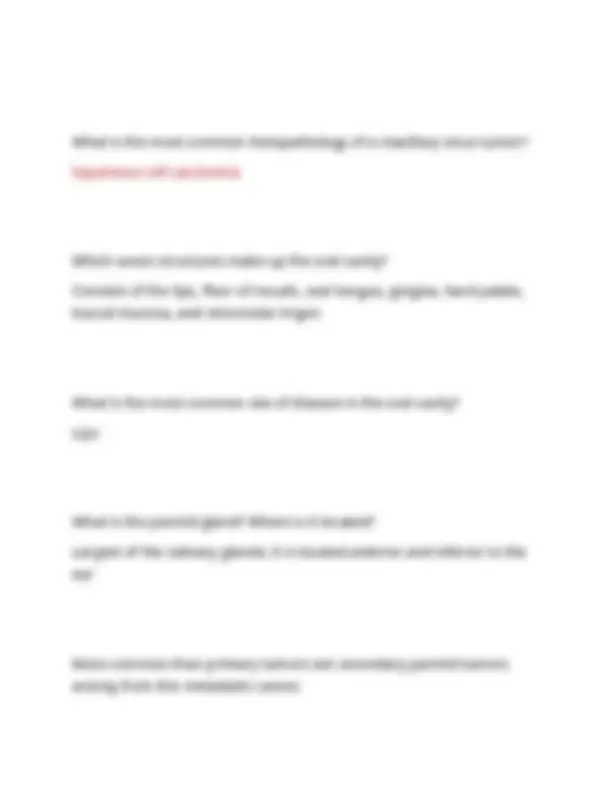
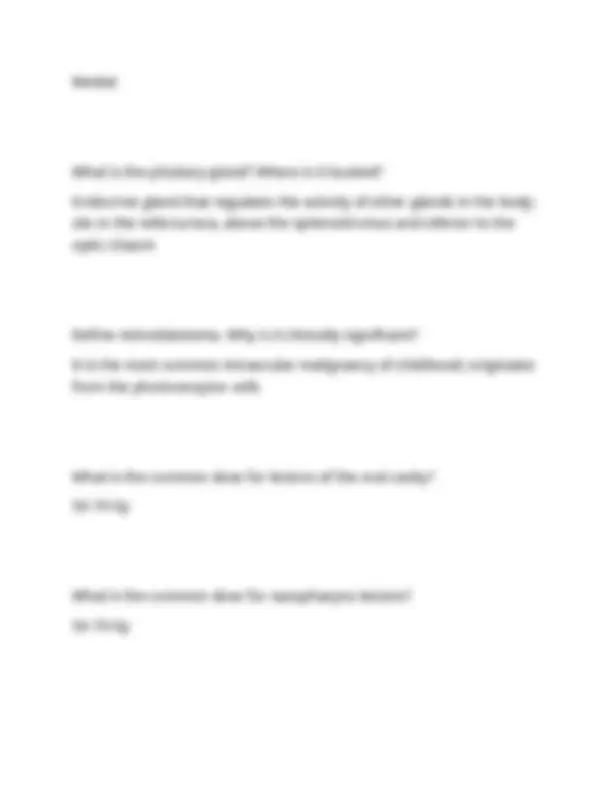
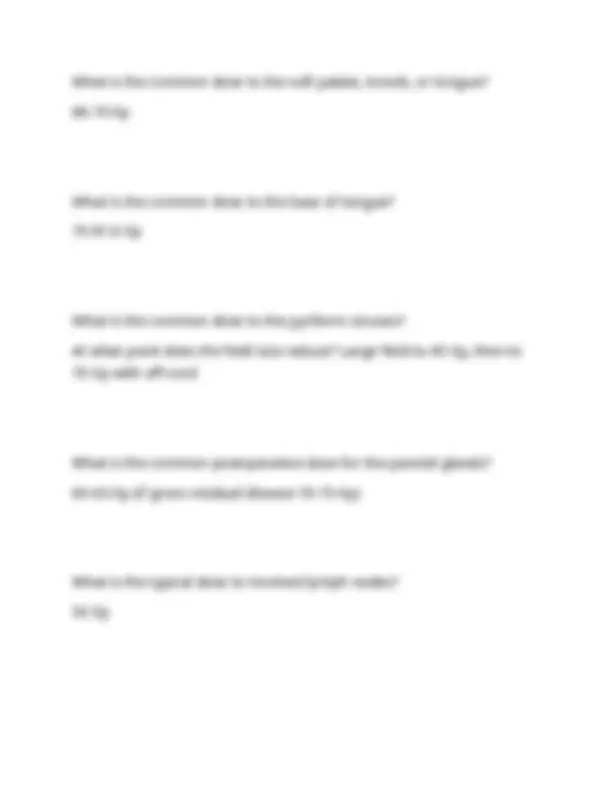
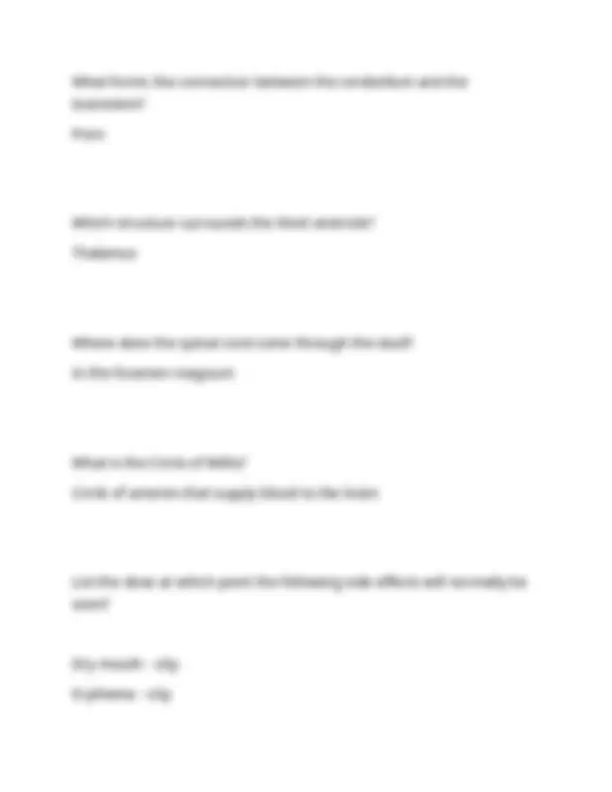
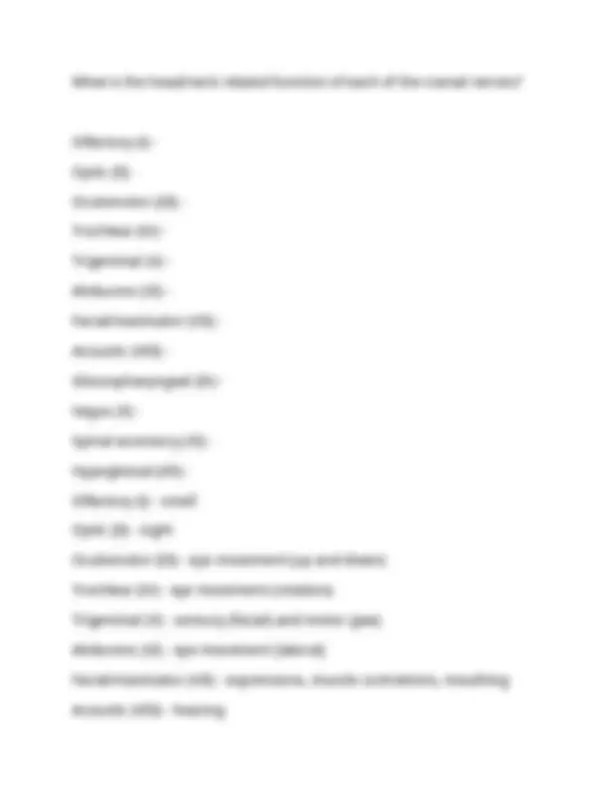
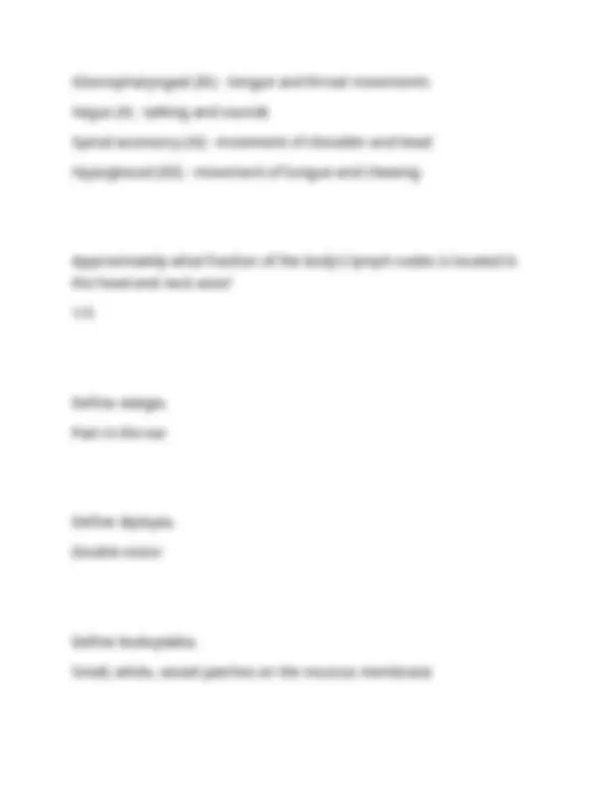
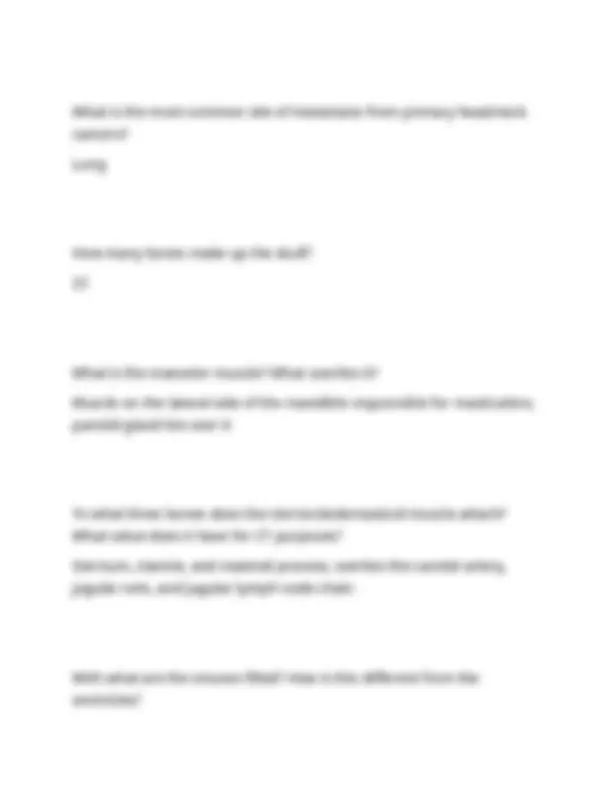


Study with the several resources on Docsity

Earn points by helping other students or get them with a premium plan


Prepare for your exams
Study with the several resources on Docsity

Earn points to download
Earn points by helping other students or get them with a premium plan
Community
Ask the community for help and clear up your study doubts
Discover the best universities in your country according to Docsity users
Free resources
Download our free guides on studying techniques, anxiety management strategies, and thesis advice from Docsity tutors
RDTP 212 HEAD REVIEW EXAM 2025\QUESTIONS AND ANSWERS |A+GRADED
Typology: Exams
1 / 16

This page cannot be seen from the preview
Don't miss anything!










What are the dose tolerances for these critical head structures? Brain (limited) - cGy Brain (whole) - cGy Brain stem - cGy Optic nerve - cGy Retina - cGy Lens - cGy Lacrimal gland - cGy Ear -cGy Spinal cord - cGy Temporomandibular joint - cGy Parotid gland - cGy Brain (limited) - 6000 cGy Brain (whole) - 4500 cGy Brain stem - 5000 cGy Optic nerve - 5000 cGy Retina - 4500 cGy
Lens - 1000 cGy Lacrimal gland - 2600 cGy Ear - 3000/5500 cGy Spinal cord - 4700 cGy Temporomandibular joint - 6000 cGy Parotid gland - 3200 cGy What is the tentorium cerebelli? Why is it of clinical importance? An extension of the dura mater and divides the cerebrum and cerebellum. Adult brain tumors are more common above the tentorium, and children's brain tumors are more common below it What is the most common type of primary brain tumor? Glioma What is the most common primary brain tumor in children? Where does it originate? Astrocytoma; Originates in the brainstem, cerebellum, white matter of the cerebrum, or spinal cord
These are benign, slow growing tumors and usually occur in the frontal lobe. In most cases the entire tumor can't be removed with surgery and radiation therapy is used for residual disease. Oligodendrogliomas Other than cancers of the GI tract, what are the three most common types of cancer that metastasize to the brain in adults? Lung, breast, and melanoma How do primary brain tumors usually spread? Local invasion and cerebrospinal fluid seeding, rarely outside of the CNS What is the number one risk factor for head (and neck) cancers? Smoking What is the anatomical position of the maxillary sinus? Largest paranasal sinus, located on both sides of the nose in the cheek area inferior to the eyes
What is the most common histopathology of a maxillary sinus tumor? Squamous cell carcinoma Which seven structures make up the oral cavity? Consists of the lips, floor of mouth, oral tongue, gingiva, hard palate, buccal mucosa, and retromolar trigon What is the most common site of disease in the oral cavity? Lips What is the parotid gland? Where is it located? Largest of the salivary glands; it is located anterior and inferior to the ear More common than primary tumors are secondary parotid tumors arising from this metastatic cancer.
What is the most common site of disease in the hypopharynx? Pyriform sinus What is the most common lymph node chain involved in head (and neck) cancers? Where are they located? Jugulodigastric nodes (JD nodes); located at the angle of the mandible What is the falx cerebri? Fold of tissue separating the two hemispheres of the cerebrum What is the anatomical location of the frontal sinus in relation to the eyes? Medial and superior What is the anatomical location of the ethmoid sinus in relation to the eyes?
Medial What is the pituitary gland? Where is it located? Endocrine gland that regulates the activity of other glands in the body; sits in the sella tursica, above the sphenoid sinus and inferior to the optic chiasm Define retinoblastoma. Why is it clinically significant? It is the most common intraocular malignancy of childhood; originates from the photoreceptor cells What is the common dose for lesions of the oral cavity? 50-70 Gy What is the common dose for nasopharynx lesions? 50-70 Gy
What forms the connection between the cerebellum and the brainstem? Pons Which structure surrounds the third ventricle? Thalamus Where does the spinal cord come through the skull? In the foramen magnum What is the Circle of Willis? Circle of arteries that supply blood to the brain List the dose at which point the following side effects will normally be seen? Dry mouth - cGy Erythema - cGy
Mucositis - cGy Cataracts -cGy Dry eye - cGy Taste changes - cGy Trismus - cGy Dry mouth - 2000 cGy Erythema - 2000 cGy Mucositis - 3000 cGy Cataracts - 500-1000 cGy Dry eye - 4000 cGy Taste changes - 1000 cGy Trismus - 6000 cGy Following a recommended oral hygiene program when undergoing irradiation of the oral cavity is important. How often should you tell your patients to: Clean teeth and brush gums - Use fluoride toothpaste or rinse - Floss - Clean teeth and brush gums - after every meal
What is the head/neck related function of each of the cranial nerves? Olfactory (I) - Optic (II) - Oculomotor (III) - Trochlear (IV) - Trigeminal (V) - Abducens (VI) - Facial/masticator (VII) - Acoustic (VIII) - Glossopharyngeal (IX) - Vagus (X) - Spinal accessory (XI) - Hypoglossal (XII) - Olfactory (I) - smell Optic (II) - sight Oculomotor (III) - eye movement (up and down) Trochlear (IV) - eye movement (rotation) Trigeminal (V) - sensory (facial) and motor (jaw) Abducens (VI) - eye movement (lateral) Facial/masticator (VII) - expressions, muscle contrations, mouthing Acoustic (VIII) - hearing
Glossopharyngeal (IX) - tongue and throat movements Vagus (X) - talking and sounds Spinal accessory (XI) - movement of shoulder and head Hypoglossal (XII) - movement of tongue and chewing Approximately what fraction of the body's lymph nodes is located in the head and neck area? 1/ Define otalgia. Pain in the ear Define diplopia. Double vision Define leukoplakia. Small, white, raised patches on the mucous membrane
Sinuses are filled with air; ventricles with CSF Not including vertebrae, what are the two separate (free-floating) bones of the adult head and neck? Mandible, hyoid